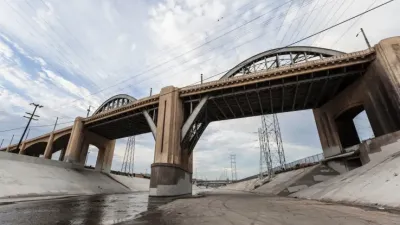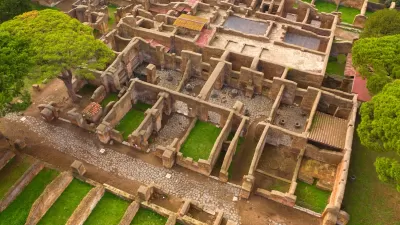Portland cement doesn't come close to matching the resiliency of the concrete created by ancient Romans. After years of research, scientists believe they've unraveled the ingredients and production techniques that made Roman concrete so superior.
"After 2,000 years, a long-lost secret behind the creation of one of the world’s most durable man-made creations ever—Roman concrete—has finally been discovered by an international team of scientists, and it may have a significant impact on how we build cities of the future," writes Bernhard Warner.
After a decade of work, "[t]he researchers now know why ancient Roman concrete is so superior," he reports. "They extracted from the floor of Italy’s Pozzuoili Bay, in the northern tip of the Bay of Naples, a sample of concrete breakwater that dates back to 37 B.C. and analyzed its mineral components at research labs in Europe and the U.S., including at Berkeley Lab’s Advanced Light Source. The analysis, the scientists believe, reveals the lost recipe of Roman concrete, and it also points to how much more stable and less environmentally damaging it is than today’s blend."
FULL STORY: Ancient Roman Concrete Is About to Revolutionize Modern Architecture

Manufactured Crisis: Losing the Nation’s Largest Source of Unsubsidized Affordable Housing
Manufactured housing communities have long been an affordable housing option for millions of people living in the U.S., but that affordability is disappearing rapidly. How did we get here?

Americans May Be Stuck — But Why?
Americans are moving a lot less than they once did, and that is a problem. While Yoni Applebaum, in his highly-publicized article Stuck, gets the reasons badly wrong, it's still important to ask: why are we moving so much less than before?

Research Shows More Roads = More Driving
A national study shows, once again, that increasing road supply induces additional vehicle travel, particularly over the long run.

Judge Halts Enforcement of Anti-Homeless Laws in Grants Pass
The Oregon city will be barred from enforcing two ordinances that prosecute unhoused residents until it increases capacity and accessibility at designated camping sites.

Advancing Sustainability in Los Angeles County Schools
The Los Angeles County Office of Education’s Green Schools Symposium brings together educators, students, and experts to advance sustainability in schools through innovative design, climate resilience strategies, and collaborative learning.

Using Old Oil and Gas Wells for Green Energy Storage
Penn State researchers have found that repurposing abandoned oil and gas wells for geothermal-assisted compressed-air energy storage can boost efficiency, reduce environmental risks, and support clean energy and job transitions.
Urban Design for Planners 1: Software Tools
This six-course series explores essential urban design concepts using open source software and equips planners with the tools they need to participate fully in the urban design process.
Planning for Universal Design
Learn the tools for implementing Universal Design in planning regulations.
City of Moreno Valley
Institute for Housing and Urban Development Studies (IHS)
City of Grandview
Harvard GSD Executive Education
NYU Wagner Graduate School of Public Service
City of Cambridge, Maryland
Newport County Development Council: Connect Greater Newport





























